
What if I told you that aging isn’t actually inevitable? That somewhere in your brain right now, there’s a single protein acting like a master dimmer switch, slowly turning down your cognitive abilities as you get older?
Here’s the kicker: scientists just figured out how to flip that switch back to “young.”
A groundbreaking study from UC San Francisco, published in Nature Aging this August, has identified what researchers are calling the first true “master switch” for brain aging. And unlike every other anti-aging discovery you’ve heard about, this one doesn’t just slow things down—it actually reverses cognitive decline.
We’re talking about mice with age-related memory problems suddenly performing like young mice again. Their brain cells literally got their mojo back.
Meet FTL1: The Protein That’s Been Aging Your Brain
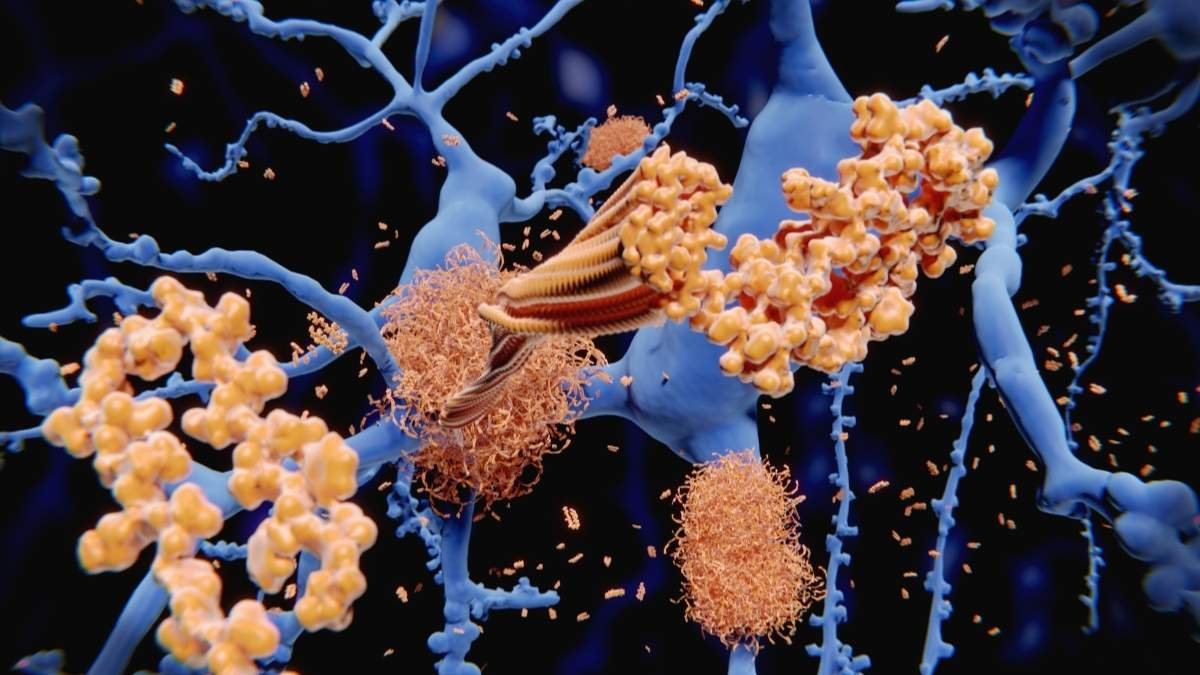
Let me introduce you to the villain (and potential hero) of this story: Ferritin Light Chain 1, or FTL1 for short.
Think of FTL1 as that coworker who starts helpful but gradually becomes more and more toxic to the workplace. In young brains, FTL1 plays a normal role in iron storage. But as you age, it starts accumulating like a hoarder, eventually wreaking havoc on your brain cells.
Dr. Saul Villeda, the study’s senior author, puts it perfectly: “It is truly a reversal of impairments. It’s much more than merely delaying or preventing symptoms.”
Here’s what makes this discovery so remarkable: Out of thousands of genes and proteins the researchers examined, FTL1 was the ONLY one that consistently increased with age in every test they ran.
Not some of the time. Not in most cases. Every. Single. Time.
The Science Behind the Magic (Don’t Worry, We’ll Keep It Simple)

You might be wondering: “How does one little protein cause so much trouble?”
Great question. Here’s the simple version:
The Iron Problem: As FTL1 builds up in your brain, it starts messing with your cells’ iron levels. Think of iron like the fuel your brain cells need to produce energy. When FTL1 goes haywire, it’s like putting sugar in your car’s gas tank—everything starts breaking down.
The Energy Crisis: Your brain cells can’t produce enough energy (specifically, something called ATP—think of it as cellular batteries). When your brain cells are running on empty, they can’t maintain the connections between neurons that store your memories.
The Memory Meltdown Without proper energy, the connections in your hippocampus—your brain’s memory center—start weakening. This is why you might start forgetting where you put your keys or struggle to remember names.
But here’s the incredible part: When researchers blocked FTL1 in old mice, their brains bounced back to youthful performance levels.
The Numbers That’ll Blow Your Mind
Before we dive into the good news, let’s talk about why this discovery matters so much.
The statistics on brain aging are honestly pretty terrifying:
- 67% of Americans experience some cognitive decline by age 70
- Women face a 37% lifetime dementia risk (compared to 24% for men)
- The economic cost? $384 billion annually in the US alone
- By 2050, that number could hit $1 trillion
And here’s a stat that really gets me: people with college degrees have just a 7% rate of cognitive decline, while those without a high school education face an 18.2% rate. Education literally protects your brain.
But what if we didn’t have to rely on education alone? What if we could flip the FTL1 switch regardless of background?
This Isn’t Just Another “Promising” Study
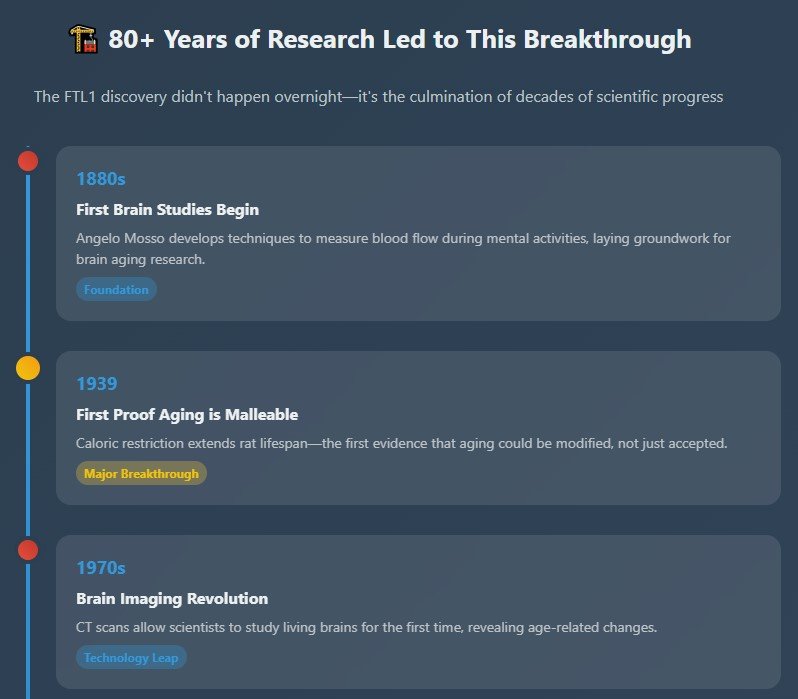
I know what you’re thinking. “Another miraculous discovery that’ll disappear into research limbo for the next 20 years, right?”
Not this time. Here’s why this feels different:
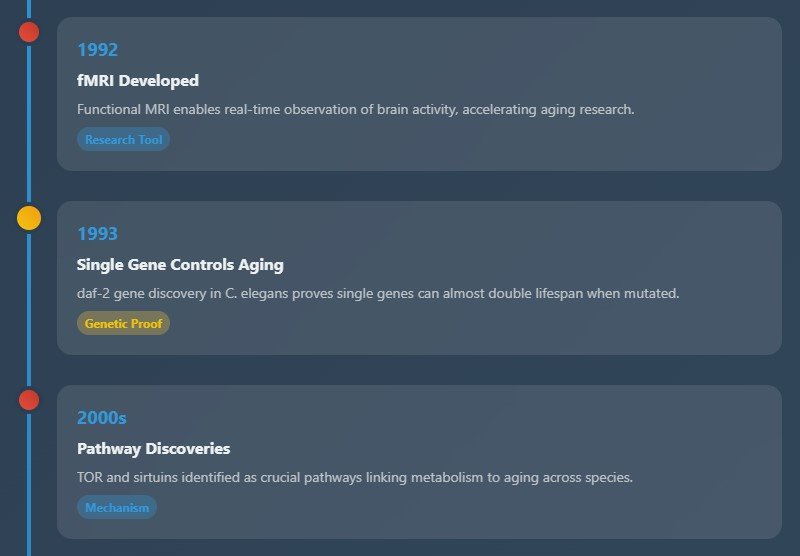
The Proof is Rock-Solid. The researchers didn’t just observe correlations. They ran what scientists call “bidirectional experiments”:
- They artificially increased FTL1 in young mice → instant brain aging
- They decreased FTL1 in old mice → restored youthful brain function
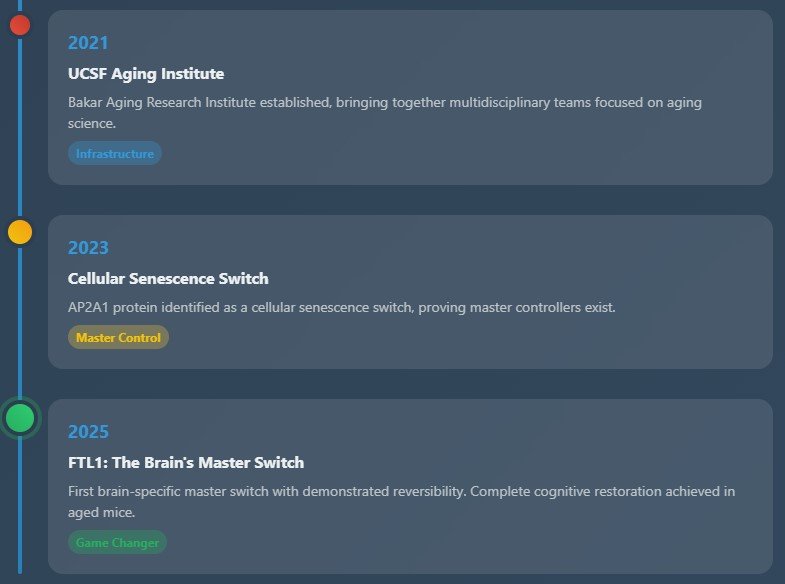
It’s backed by 80+ Years of Research. This isn’t coming out of nowhere. Scientists have been building toward this moment since 1939, when researchers first proved that aging could be modified through caloric restriction.
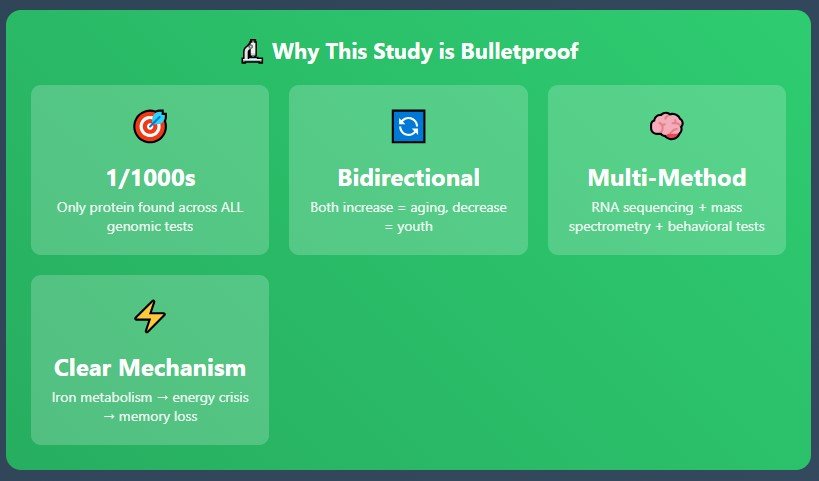
The Mechanism is Clear. They know exactly how FTL1 causes problems (iron metabolism and energy production) and how to fix it (block the protein or supplement with NADH, a compound that supports cellular energy).
What This Means for Your Future Brain
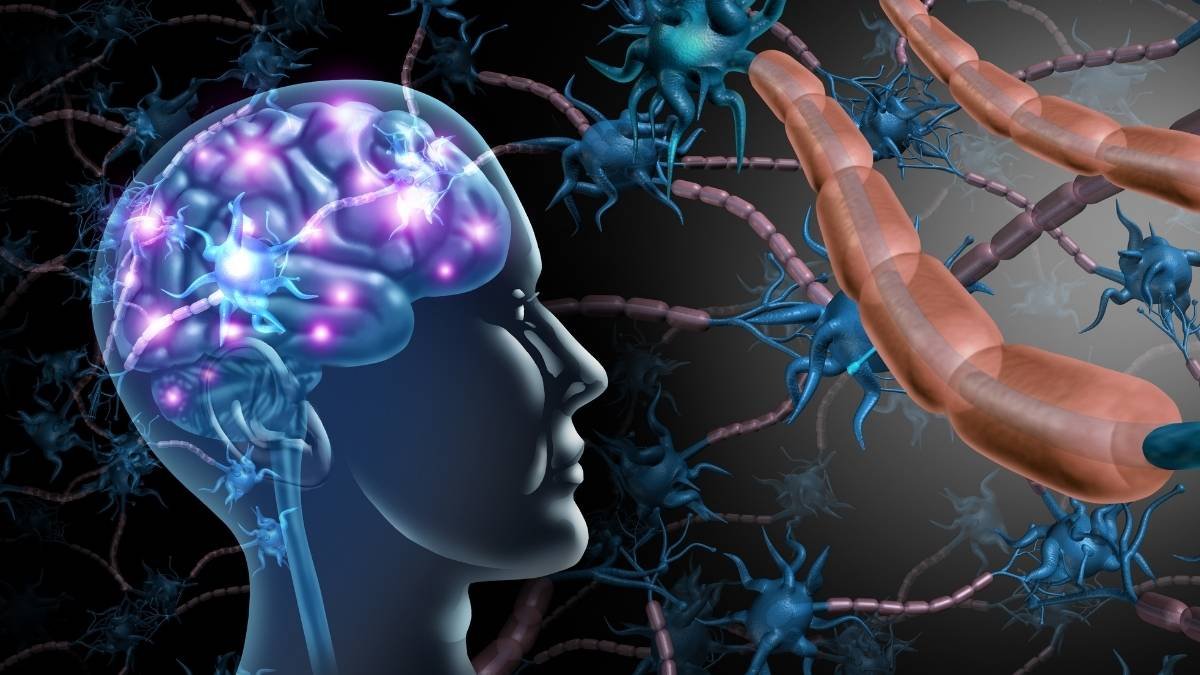
Let’s get real for a second. You’re probably wondering: “When can I get this treatment?”
The realistic timeline: 8-12 years for a specific FTL1-blocking drug to hit the market.
But here’s the thing: You don’t have to wait that long to start protecting your brain.
The research reveals several mechanisms you can target right now:
Your Brain’s Energy System

Remember how FTL1 damages your cells’ ability to produce energy? You can support that system today:
- NADH supplementation: This compound completely reversed FTL1 damage in the study
- CoQ10 and PQQ: These support your mitochondria (your cells’ power plants)
- Regular exercise: Literally builds more mitochondria in your brain cells
Iron Management
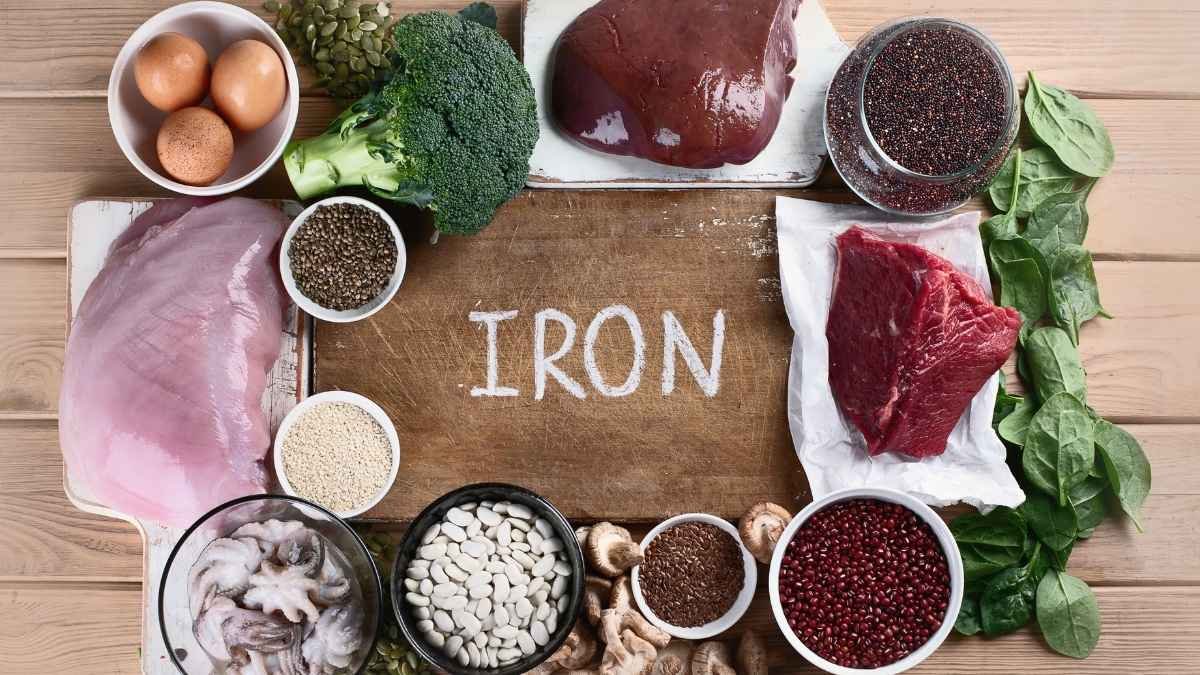
Since excess iron feeds the FTL1 problem:
- Skip unnecessary iron supplements (unless your doctor says you need them)
- Get your ferritin levels checked in your regular blood work
- Focus on natural iron sources from food rather than synthetic supplements
Sleep Optimization

Here’s a wild fact: Your brain’s waste clearance system increases activity by 60% during deep sleep. Poor sleep for just 24 hours leads to protein buildup—potentially including FTL1.
Translation: Your sleep quality directly impacts how much aging protein accumulates in your brain.
The Global Race to Unlock Brain Aging
All these institutions are working together, creating a perfect storm for breakthrough treatments
This isn’t just happening in one lab. There’s an entire ecosystem of research converging on similar discoveries:
Harvard has been studying over 1,500 participants and found that more than 40% maintain sharp cognitive function into their 80s and 90s—even with Alzheimer’s pathology in their brains.
Stanford developed algorithms showing that people with “young brains” have a 40% lower risk of death over 15 years.
MIT is testing 40Hz light and sound therapy that might clear brain plaques and improve memory.
The point? This isn’t just one promising study. It’s part of a massive, coordinated effort to crack the aging code.
What Makes This Discovery Different from Everything Else

I’ve been following longevity research for years, and honestly, most discoveries fall into the “interesting but impractical” category.
This feels different for three reasons:
1. It’s Simple One protein. One target. Not a complex cocktail of interventions.
2. It’s Reversible, Not just prevention—actual reversal of aging effects.
3. It Has Near-Term Applications. While we wait for the specific drug, we can target the underlying mechanisms (energy production, iron metabolism, sleep) right now.
Your Action Plan: What You Can Do Today
- 1Set a consistent bedtime (within 30 min daily)
- 2Create a cool, dark sleep environment
- 3No screens 1 hour before bed
- 4Aim for 7-9 hours nightly
- 1Walk for 20-30 minutes daily
- 2Take stairs instead of elevators
- 3Do bodyweight exercises (push-ups, squats)
- 4Track steps (aim for 7,000+ daily)
- 1Learn something new daily (language, skill)
- 2Do puzzles or brain games
- 3Read challenging material
- 4Practice memory exercises
- 1Schedule comprehensive physical
- 2Request ferritin level testing
- 3Check B-vitamin status
- 4Discuss NADH supplementation
- 1Consider NADH (10-20mg daily)
- 2Add CoQ10 (100-200mg daily)
- 3Include PQQ (10-20mg daily)
- 4Avoid unnecessary iron supplements
- 1Follow Mediterranean-style diet
- 2Increase omega-3 rich foods
- 3Add antioxidant-rich berries daily
- 4Minimize processed foods
- 1Follow UCSF aging research updates
- 2Consider joining brain aging studies
- 3Track emerging FTL1 treatments
- 4Connect with longevity communities
- 1Annual cognitive assessments
- 2Track biomarkers (ferritin, inflammation)
- 3Monitor sleep and exercise metrics
- 4Document memory and focus changes
- 1Maintain overall brain health
- 2Build healthcare provider relationships
- 3Consider clinical trial participation
- 4Plan for treatment accessibility
Here’s your takeaway menu of brain-protecting strategies you can implement immediately:
The Quick Wins
- Optimize your sleep (7-9 hours, consistent schedule)
- Exercise regularly (even walking counts)
- Consider NADH supplementation (consult your doctor first)
The Medium-Term Moves
- Get ferritin levels tested at your next physical
- Avoid unnecessary iron supplements
- Focus on brain-healthy nutrition (Mediterranean diet style)
The Long-Term Strategy
- Stay updated on FTL1 research (bookmark UCSF’s aging research updates)
- Consider participating in brain aging studies if you qualify
- Maintain cognitive challenges throughout life
The Bottom Line: Hope Just Got Real
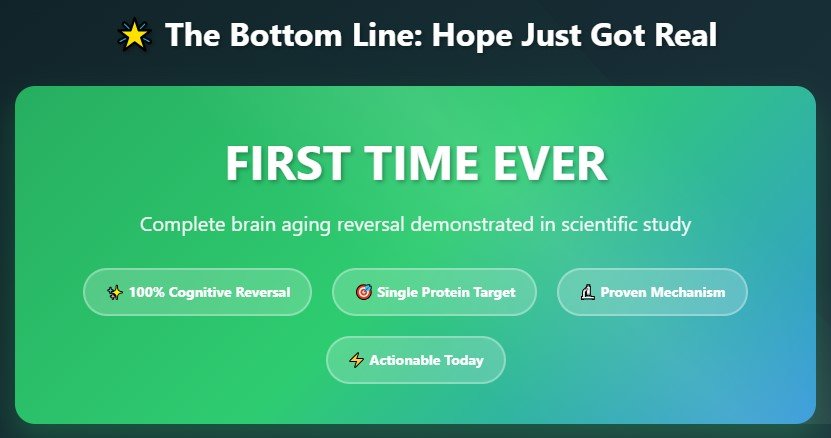
For the first time in human history, we’re not just talking about slowing down brain aging—we’re talking about reversing it.
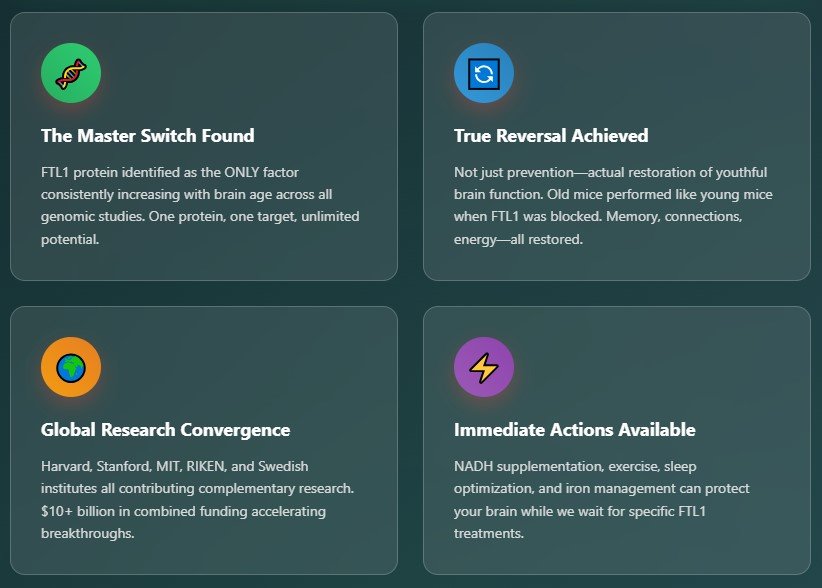
Dr. Villeda’s team has given us something we’ve never had before: a clear target, a proven mechanism, and actionable steps we can take while we wait for the full treatment.
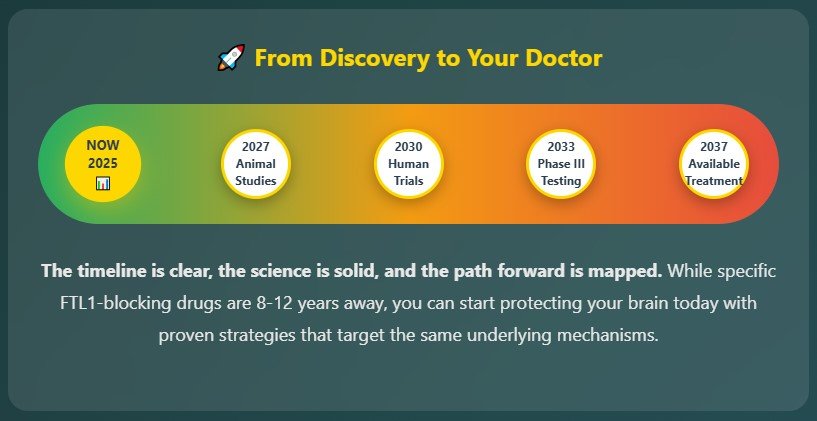
Yes, the specific FTL1-blocking drugs are still years away. But the research roadmap is crystal clear, and there are things you can do right now to protect your brain.
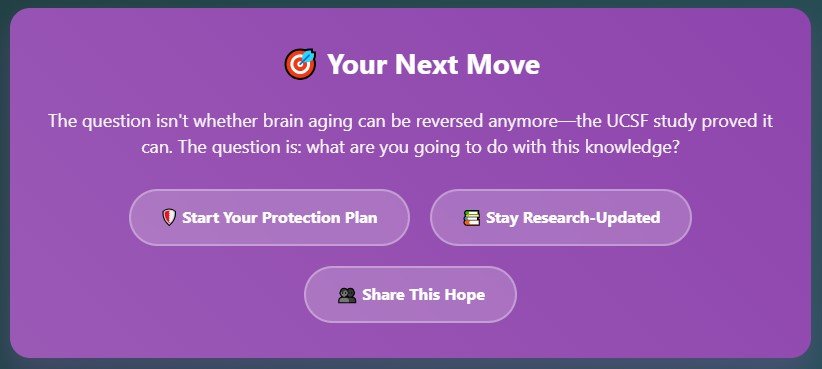
The question isn’t whether brain aging can be reversed anymore. The question is: what are you going to do with this knowledge?
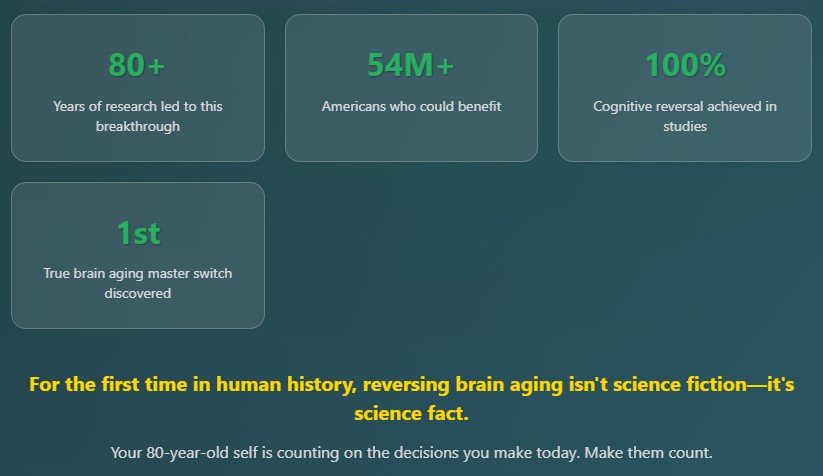
Ready to future-proof your brain? Start with one simple change this week—whether it’s improving your sleep, adding a walk to your daily routine, or scheduling that overdue physical to check your iron levels. Your 80-year-old self will thank you.
What’s your first move going to be? Share in the comments below.






